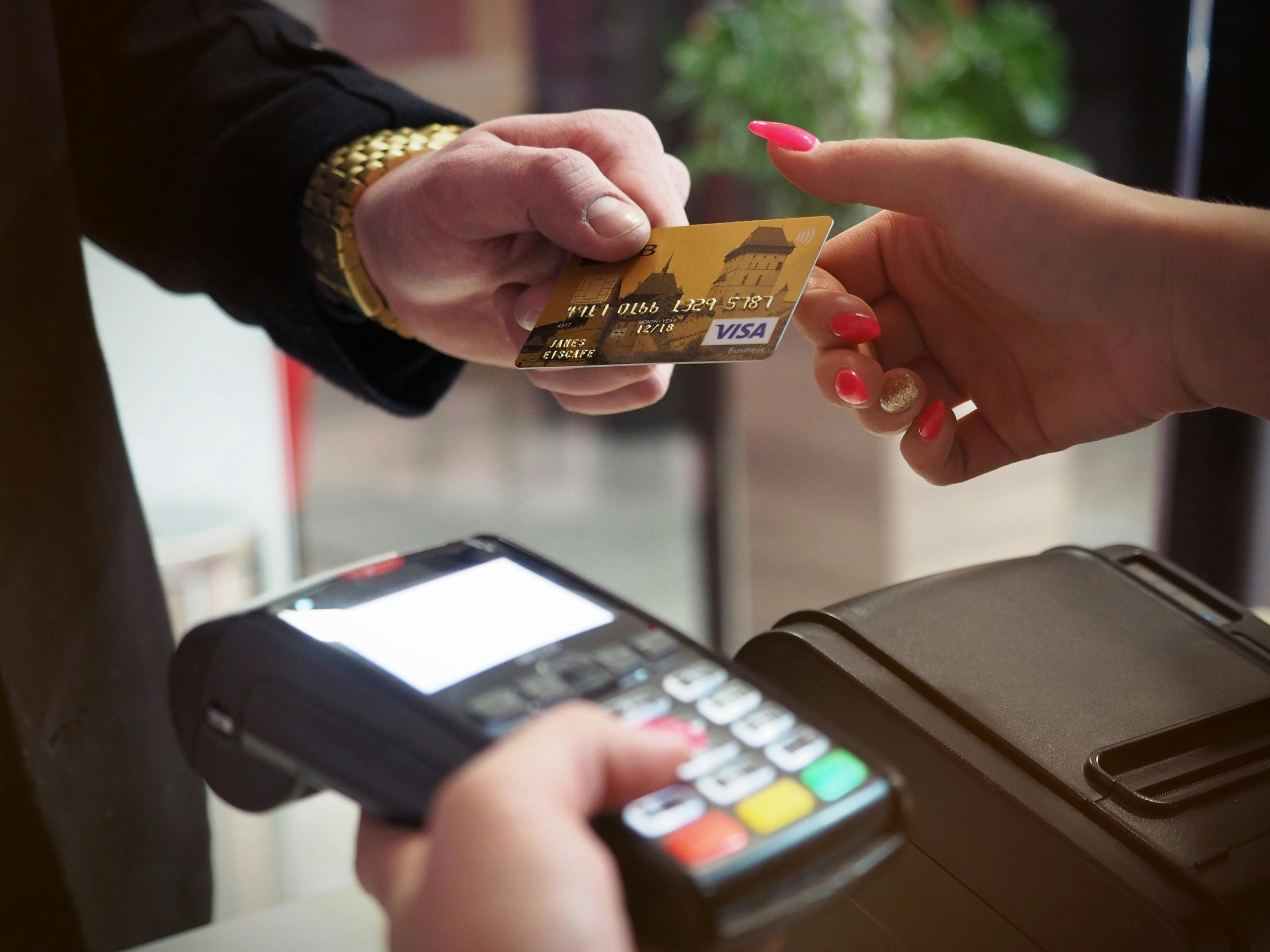Technology
Most Commonly Used Payment Methods per Industry

The payment landscape across industries is continuously evolving, driven by technological advancements, changing consumer behaviors, and the rise of digital commerce. Understanding the prevalent payment methods within different sectors is crucial for businesses, financial institutions, and policymakers to adapt to consumer preferences and foster financial inclusivity.
This industry survey aims to analyze the most commonly used payment methods across five diverse industries, providing data-driven insights into consumer payment preferences and industry-specific trends.
Methodology
The methodology employed for this industry survey involved a comprehensive approach to gathering, analyzing, and interpreting data on payment methods across diverse industries.
The survey instrument was meticulously crafted to capture detailed information on the prevailing payment methods within each industry. The questionnaire encompassed inquiries about the frequency of use, consumer preferences, and factors influencing payment choices. Data collection was conducted through a multi-faceted approach, leveraging online surveys, in-depth interviews with industry experts, and the review of industry reports and payment trends. This multi-pronged strategy ensured a holistic and nuanced understanding of payment preferences within each industry.
The survey sample was carefully designed to encompass a diverse cross-section of participants, including consumers, industry professionals, and payment service providers. The inclusion of varied perspectives ensured that the findings accurately represented the broad spectrum of payment behaviors and preferences.
The interpretation of the survey findings involved quantitative data with qualitative insights, thereby providing a comprehensive understanding of the nuanced dynamics of payment methods in the selected industries. The synthesis process aimed to unearth actionable insights for businesses, financial institutions, and policymakers.
This methodological approach ensured that the survey findings were robust, reflective of industry realities, and equipped with the depth and breadth necessary to inform strategic decision-making in the realm of payment solutions and financial services.
Findings
E-commerce Industry
- Credit/Debit Cards: 55%
- Digital Wallets (e.g., PayPal, Google Pay): 30%
- Bank Transfers: 10%
- Cash on Delivery: 5%
In the e-commerce industry, credit/debit cards emerged as the most popular payment method, with 55% of transactions being conducted through this channel. The widespread use of credit/debit cards in e-commerce reflects consumer trust in these established payment methods, offering convenience and security for online transactions.
Digital wallets accounted for 30% of the transactions, as reported by Payments Dive. They are followed by bank transfers at 10% and cash on delivery at 5%. The growing popularity of digital wallets signifies the increasing adoption of mobile payment solutions, catering to tech-savvy consumers seeking seamless checkout experiences. As you can see, while bank transfers remain a viable option, their usage is relatively lower due to longer processing times and the preference for instant payment methods.
Despite the rise of digital payments, cash on delivery continues to be a preferred choice for some consumers, particularly in regions with lower digital payment penetration.
Healthcare Industry
- Health Insurance: 40%
- Credit/Debit Cards: 30%
- Digital Wallets (e.g., Google Pay, Samsung Pay): 20%
- Direct Bank Payments: 10%
Within the healthcare industry, health insurance was the most commonly used payment method, covering 40% of transactions. This high usage can be attributed to the comprehensive coverage provided by health insurance plans, which alleviate the financial burden on patients for medical services, consultations, and treatments.
According to Raintree Systems, credit and debit card transactions accounted for 30% of the total payments in the healthcare sector. Patients often use these cards to make copayments, cover deductibles, and pay for non-covered medical services. The convenience and security offered by card payments contribute to their popularity in the healthcare industry.
Digital wallets, such as Google Pay and Samsung Pay, constituted 20% of healthcare transactions. Patients opt for digital wallets for seamless and contactless payments, especially for smaller medical expenses, pharmacy purchases, and health-related subscriptions. Finally, direct bank payments were used in 10% of healthcare transactions. This payment method is often favored for larger medical bills, elective procedures, and specialized treatments, as it allows patients to transfer funds directly from their bank accounts to healthcare providers.
Retail Industry
- Credit/Debit Cards: 50%
- Cash: 30%
- Digital Wallets (e.g., Amazon Pay, Alipay): 15%
- Store Credit/Loyalty Cards: 5%
In the retail sector, credit/debit cards continue to dominate, offering speed and convenience for both in-store and online transactions, supported by robust payment infrastructure and consumer familiarity. They account for 50% of the transactions. Cash transactions accounted for 30%, followed by digital wallets at 15% and store credit/loyalty cards at 5%. The enduring use of cash in retail reflects consumer preference for tangible transactions and the need for an alternative payment method in areas with limited digital payment acceptance.
The gradual uptake of mobile payment apps signifies the shift towards contactless payments and the integration of loyalty programs and rewards within digital wallets. While less prevalent, bank transfers are utilized for larger transactions or by businesses for B2B payments, emphasizing the need for diverse payment options in the retail ecosystem.
Online Casino Industry
- Digital Wallets (PayPal, Neteller): 50%
- Cryptocurrencies: 25%
- Credit/Debit Cards: 15%
- Bank Transfers: 10%
According to Slotswise, the online casino industry demonstrated a strong preference for digital wallets as the primary payment method, with 50% of transactions conducted using PayPal. The use of digital wallets mirrors the industry’s commitment to providing seamless payment experiences, ensuring quick deposits and withdrawals for online gaming enthusiasts.
Another growing trend in online casino payments are cryptocurrencies such as Bitcoin and Ethereum, accounting at 25% of the transactions. The prevalence of cryptocurrency in online casinos reflects the industry’s emphasis on privacy, security, and decentralization, appealing to players seeking anonymity and fast transactions.
Credit/debit cards followed at 30%, while e-wallets and bank wire transfers accounted for 20% and 10% of the transactions, respectively.
Traditional payment methods such as credit/debit cards continue to be widely accepted, offering accessibility to a broad player base and familiarity with online transactions. Finally, while less common, bank transfers provide an alternative for players seeking direct fund transfers without the need for intermediary platforms.
Travel and Hospitality Industry
- Credit/Debit Cards: 55%
- Online Travel Agencies (e.g., Expedia, Booking.com): 25%
- Digital Wallets (e.g., PayPal, Venmo): 15%
- Cash: 5%
In the travel and hospitality industry, credit/debit cards were the dominant payment method, representing 55% of transactions. This dominance underscores the seamless payment experiences offered to travelers, including benefits such as travel insurance and rewards programs.
Online travel agencies were the next preferred option at 25%. Industry-specific credit cards cater to frequent travelers, offering perks such as airline miles, hotel discounts, and travel-related insurance, enhancing the overall payment experience.
Then, digital wallets and cash transactions follow, at 15% and 5%, respectively. The use of digital wallets aligns with the industry’s focus on mobile convenience, enabling travelers to make quick and secure payments while on the go. Despite the digital shift, the use of cash persists in certain travel destinations and accommodations, catering to diverse consumer preferences and local payment practices.
Conclusion
The survey findings underscore the dynamic nature of payment preferences across industries, reflecting the diverse needs and behaviors of consumers. Digital wallets and credit/debit cards have emerged as primary payment options, signaling the importance of seamless and secure transaction experiences. The growing adoption of e-wallets in online gaming and casino industries signifies the impact of digital innovation on payment methods, presenting new opportunities and challenges for financial ecosystems. As industries continue to embrace digital transformation, the provision of diverse payment options will be essential to meet the evolving needs of consumers and drive financial inclusivity.
In conclusion, understanding and adapting to industry-specific payment preferences will be pivotal for businesses and financial stakeholders to foster innovation, enhance consumer experiences, and navigate the evolving landscape of digital commerce and finance.












